Hook: Did you know that in 2023, wildfires caused air pollution so severe that health alerts were activated in more than 15 U.S. states? The impact of wildfire smoke is no longer a distant problem—it's a very real public health issue that can affect anyone, anywhere, at any time.
With wildfire seasons growing longer, and the air pollution risk from fire smoke rising, knowing how to protect yourself from the bad air caused by wildfires is crucial. In this guide, you'll discover practical steps to keep your indoor air clean, choose the right air cleaner , and create safer spaces for your family—even when the skies are smoky and the air quality is poor.
Whether you live near a fire zone or hundreds of miles away, these actionable solutions will help you breathe easier and safeguard your health during wildfire smoke events and beyond.
Facing the Growing Threat: Why You Must Protect Yourself from the Bad Air Caused by Wildfires
"In 2023, wildfires contributed to air pollution levels that sent health alerts through over 15 U.S. states—a stark reminder that wildfire smoke is a pressing public health concern."
- Understand the urgency: health risks, frequency, and areas affected by wildfire smoke and fire smoke
With the increase in severe wildfire seasons across the United States and globally, more people are being exposed to harmful air quality conditions each year. Wildfire smoke doesn't just pose a threat to nearby communities—it can travel thousands of miles, impacting areas unaccustomed to fire smoke pollution. This exposure is very different from typical urban air pollution , often having higher concentrations of particulate matter and toxic gases. Being aware of the health implications and learning how to protect yourself is now vital for everyone, not just those in traditional fire zones.
Frequent smoke events create lasting public health concerns, especially for vulnerable groups like children, older adults, and those with respiratory illnesses . Negative effects can range from mild symptoms—like eye irritation and cough—to serious long-term health complications such as cardiovascular disease , asthma , and even increased mortality rates. As wildfires become more frequent and more intense, prioritizing the steps to keep indoor air quality clean during fire season is more important than ever.
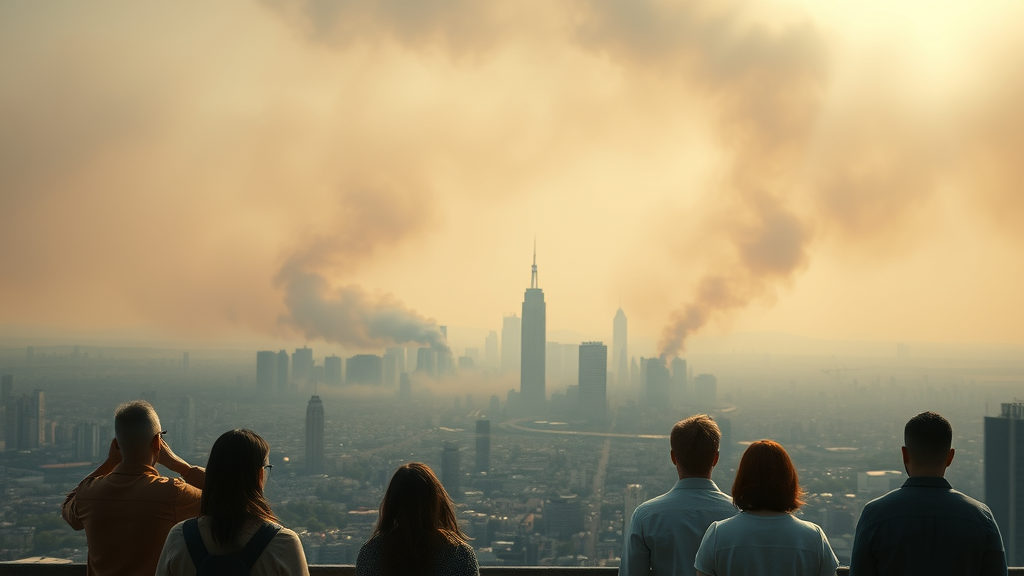
The Silent Spread of Wildfire Smoke: Air Quality and Public Health Risks
- Immediate effects: breathing difficulties, eye irritation
- Long-term concerns: cardiovascular and respiratory diseases
- Vulnerable groups: children, elderly, those with asthma
Wildfire smoke is a mix of gases and fine particles that can easily travel indoors and affect air clean environments. Within hours of exposure, even healthy adults may notice symptoms such as irritated eyes, sore throats, and shortness of breath. For those with underlying health conditions—like heart disease or lung disease—these symptoms can escalate quickly and require medical attention.
Over the long term, exposure to high levels of particulate matter and other wildfire pollutants increases the risk for serious conditions such as asthma, bronchitis, and cardiovascular illnesses. The greatest risk falls on vulnerable populations: children , whose lungs are still developing, older adults , and people dealing with chronic illnesses. Understanding these dangers helps reinforce the need for effective clean air and indoor air quality strategies during smoke events.
Setting up protective measures before smoke arrives can dramatically lower the chances of breathing problems, hospitalizations, and other public health emergencies. Taking action early benefits not just your own health, but the safety of your loved ones and the wider community as well.
Understanding How to Protect Yourself from the Bad Air Caused by Wildfires
- What constitutes unhealthy air quality?
- Key pollutants including particulate matter and their health impacts
- Why wildfire smoke and fire smoke are more dangerous than city air pollution
To protect yourself from the bad air caused by wildfires , you need to recognize what makes wildfire smoke so harmful. The air quality index (AQI) measures how polluted the air is and flags levels that are unhealthy, very unhealthy, or hazardous. Smoke from wildfires contains high concentrations of particulate matter —tiny solid and liquid particles suspended in air. These fine particles can be inhaled deeply into the lungs, causing inflammation and aggravating existing health conditions much more rapidly than typical city air pollution.
Unlike smog from cars and factories that linger over cities, wildfire smoke is packed with toxic gases and fine particles from burning vegetation and household materials. This unique mix makes fire smoke much more dangerous, even if visibility doesn’t seem especially poor. Protecting your indoor air quality requires understanding key pollutants and implementing rapid air clean strategies once smoke events are detected.
| Pollutant | Source | Health Impact | Abundance in Wildfire Smoke |
|---|---|---|---|
| Particulate Matter (PM2.5, PM10) | Wildfires, vehicles, factories | Respiratory, cardiovascular issues | Very High |
| Carbon Monoxide (CO) | Wildfires, car exhaust | Fatigue, dizziness, headaches | High |
| Volatile Organic Compounds (VOCs) | Wildfires, solvents | Eye, nose, throat irritation | Moderate–High |
| Ozone | Sun, vehicle emissions | Respiratory distress | Low–Indirect |

Recognizing Danger: When to Take Action to Protect Yourself from the Bad Air Caused by Wildfires
Being able to spot the warning signs of poor air quality is key to knowing when you need to take extra steps. Watch for visible haze, a strong smell of smoke, throat irritation, coughing, or watering eyes—even before official alerts are issued. Modern technology provides real-time AQI updates, helping you stay ahead of hazards and shield yourself during the most critical times.
It’s not enough to react once you can taste the smoke in the air. Especially for children, older adults, and those with lung disease or heart disease , early response is vital. Set up alerts and check frequently used air quality maps—this can make the difference between mild symptoms and a medical emergency. Learn to trust these signs and resources, and act quickly when a smoke event approaches.
How to Monitor Air Quality and Smoke Events
- Tracking air quality index (AQI)
- Best apps and resources
- Noticing the signs of a smoke event
The AQI is your best guide for knowing when it’s time to stay indoors and implement other air clean measures. Use apps such as AirNow, IQAir, or local government sources to get live air quality updates for your area. These tools will identify local smoke events and provide color-coded warnings about health risk levels. Understanding the AQI scale (green = good, yellow = moderate, orange = unhealthy for sensitive groups, and so on) allows you to plan your outdoor and indoor activities safely.
Even before official AQI warnings hit the news, you can often notice subtle shifts: a sudden smoky smell, visible particles in the sunlight, or feelings of shortness of breath during outdoor activity. Trust both the science and your senses—if it looks, smells, or feels “off,” act to protect your lungs and indoor air quality immediately. Remember to check AQI before heading outdoors, especially during fire season.
First Steps: Immediate Actions to Protect Yourself from the Bad Air Caused by Wildfires
- Stay indoors during high smoke periods
- Seal windows and doors
- Avoid outdoor exercise
"During fire smoke advisories, keeping indoor air quality high can reduce smoke particle infiltration by over 80%."
Your first defense during a wildfire smoke event is to stay indoors . Shut and seal all windows and doors with weather-stripping or damp towels. Avoid burning candles or running anything that draws in outdoor air—like exhaust fans or old air conditioners. Create a “clean air room” with an air cleaner or purifier for your family to retreat to when smoke gets especially heavy. Limit activities that stir up dust, like sweeping or vacuuming without a HEPA filter.
Minimize physical exertion, especially vigorous outdoor exercise . If you must go outside, keep it brief and wear a properly fitted mask for added protection (more on that in a later section). These immediate actions are proven to reduce your exposure to particulate matter and lower the risk of both short- and long-term health problems associated with wildfire smoke.

Improving Indoor Air Quality: The Key to Shielding Yourself from Wildfire Smoke
When wildfires rage outside, indoor air quality becomes your primary line of defense against fire smoke . This means using technology and practical strategies to eliminate smoke particles from entering—and staying—in your home. Investing in the right air cleaners , portable air cleaners , and even DIY air cleaner setups can have a massive impact on your exposure to dangerous particulate matter and gases.
Focus on making your home a haven with well-maintained air purifier devices. Even simple changes, such as running your air conditioner in recirculate mode and sealing leaks around windows and doors, can drastically cut down on smoke intrusion. The next sections will break down the best options, from store-bought solutions to creative, budget-friendly DIY fixes.
Air Cleaners, Portable Air Cleaners, and Air Purifiers: What Works Best?
- How air purifiers and air cleaners work
- Top-rated portable air cleaner models
- Maintenance and filter replacement tips
Air purifiers and air cleaners work by filtering out harmful particulate matter and volatile pollutants from indoor air . When shopping, look for models with HEPA or high-efficiency filters, which are certified to capture at least 99.97% of particles as small as 0.3 microns—well below the size of particles in wildfire smoke. Top portable air cleaner brands include IQAir, Honeywell, and LEVOIT, all of which offer easy filter replacements and coverage for common room sizes.
To ensure ongoing protection, check your filters every few weeks during fires or heavy pollution, and replace as recommended by the manufacturer. Dirty filters lose effectiveness and can even become sources of new contamination. A well-placed, well-maintained air purifier is one of the best investments for improving indoor air quality during and after a smoke event.
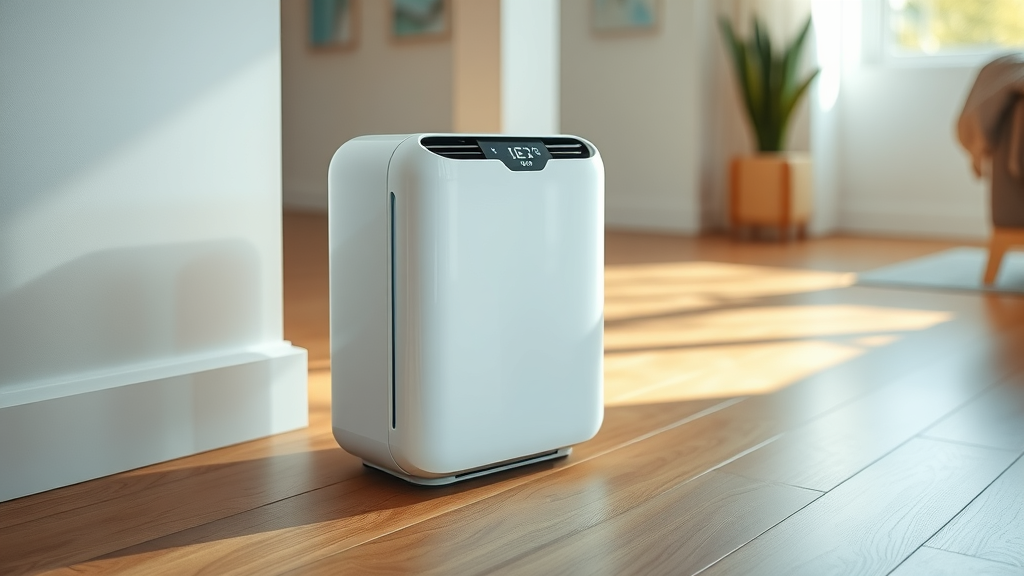
DIY Air Cleaner Solutions: Affordable Air Clean on a Budget
- How to build a DIY air cleaner using a box fan and furnace filter
- Effectiveness vs commercial purifiers
You don’t have to spend a fortune to enjoy better air quality during a smoke event. DIY air cleaner projects are as simple as attaching a high-quality furnace or HVAC filter (MERV 13 or better) to a basic box fan . Secure the filter to the intake side of the fan, tape it for a snug seal, and let it run in your chosen clean air room. This affordable solution captures most wildfire smoke particles and often rivals the performance of commercial air purifiers —especially during emergencies or when supplies are limited.
Research and public health agencies confirm that diy air cleaner solutions can reduce indoor smoke levels just as well as many store-bought units, provided you use the right filter. For best results, replace filters as they become discolored and always follow safe assembly tips to avoid overheating your fan.
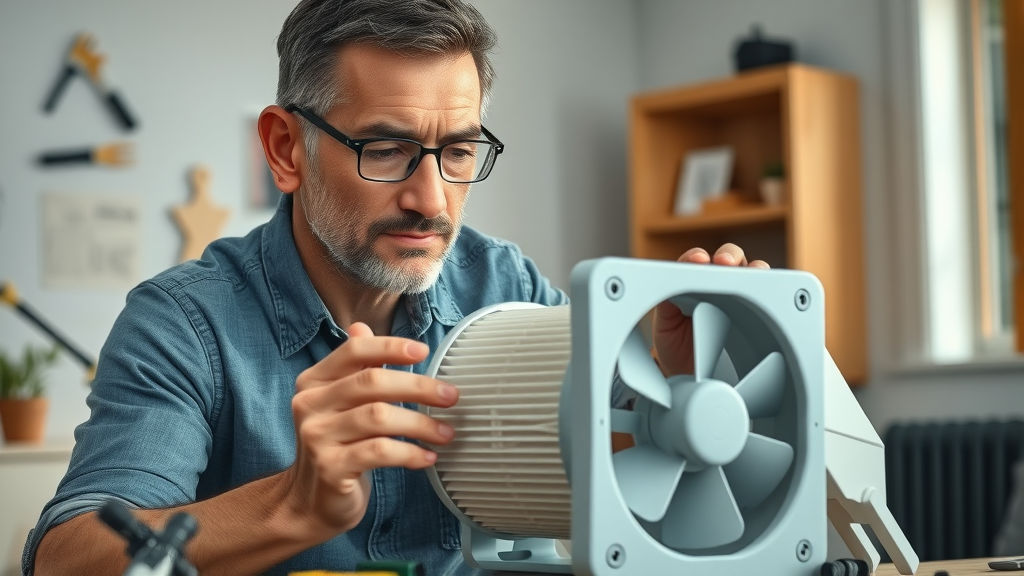
Air Filtration and Air Conditioning Strategies for Improved Indoor Air During Wildfires
- Running air conditioners in recirculate mode
- Upgrading HVAC filters for wildfire smoke
If you have central air, set your air conditioner or HVAC system to “recirculate” to prevent outdoor air from entering your home. This keeps your system moving and filtering air already inside, reducing the infiltration of fresh smoke. It’s also wise to upgrade your HVAC filter to a MERV 13 or higher, specifically designed to target the fine particles present in wildfire smoke events.
In rooms with window units, close the vent so outdoor air isn’t being pulled in, and only run these units if they don’t exhaust air externally. Regularly check and clean filters, ensuring nothing blocks airflow or allows particulate matter to slip by. By combining higher-grade filtration with smart use of existing air conditioning , you maximize your defense against harmful air pollution before it can settle inside your home.
Protect Yourself from Bad Air Outdoors: Masks, Clothing, and Outdoor Air Quality
- N95 masks: protection against particulate matter
- Limit outdoor exposure
- Proper protective clothing
Sometimes, it’s not possible to stay indoors during a smoke event. If you must go outside, wearing a fitted N95 mask is your strongest protection against inhaling the microscopic particulate matter in wildfire smoke. Cloth masks, surgical masks, and bandanas don’t filter out these fine particles. When combined with avoiding strenuous activity and wearing long sleeves and pants, you minimize your contact with both smoke and falling ash.
| Mask Type | Particle Filtration | Fit | Recommended for Wildfire Smoke? |
|---|---|---|---|
| N95 | High (95% of particles >0.3 microns) | Seals to face | Yes |
| KN95 | High | Good, if certified | Yes |
| Surgical Mask | Low | Loose | No |
| Cloth/Bandana | Very Low | Loose | No |
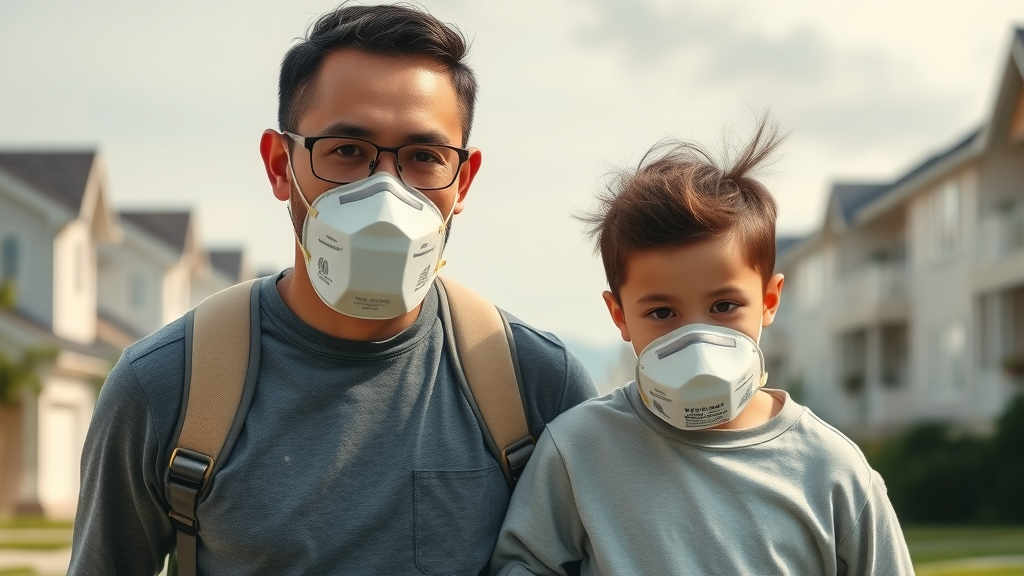
Staying Safe at Home: Safeguarding Indoor Air and Indoor Air Quality
To consistently protect yourself from the bad air caused by wildfires , proactive home preparation is just as important as reacting during smoke events. Set up a designated clean air room (preferably one without a fireplace or many windows), ensure you have working air cleaners or air purifiers ready, and store enough essentials for several days of heavy smoke exposure.
Planning ahead builds a buffer against sudden air quality drops, reducing the stress of last-minute scrambling. Stock up on bottled water, medications, and non-perishable food, and make sure you have battery-powered fans and flashlights in case of power outages. Having these supplies handy can make difficult days a little easier and a lot safer.
Home Preparation Checklist for Smoke Events
- Designated clean air rooms
- Essentials (water, medication, air cleaner)
- Emergency supplies and best locations
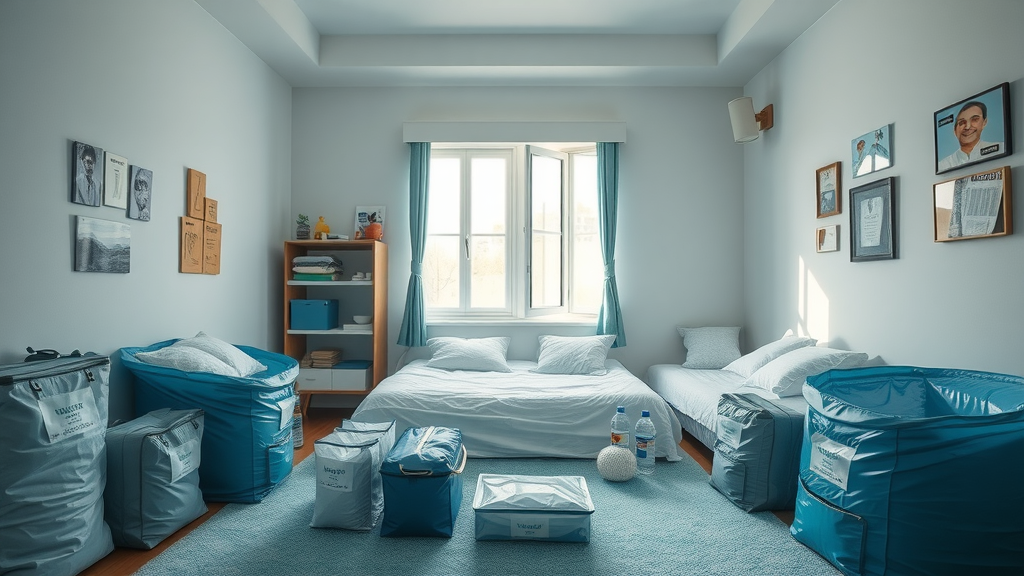
Creating a clean air space is one of the best ways to protect your household, especially during lengthy smoke events. Choose a room that can be sealed off and outfitted with your best air cleaner or a DIY air purifier. Store medical supplies, face masks, water, non-perishable food, and a flashlight or battery radio in this space. By keeping your clean air room prepared, you'll be ready to respond quickly whenever wildfire smoke adversely impacts your indoor air quality .
Protecting Sensitive Groups from the Bad Air Caused by Wildfires
- Special tips for children, elderly, pregnant women
- Managing chronic diseases during fire smoke events
"Public health officials recommend creating a safe, clean air space ahead of wildfire season for best results."
Some individuals need extra protection during wildfire smoke exposure. Children , whose lungs are still developing, breathe more air per pound of body weight than adults, making them especially vulnerable. Older adults or those with chronic conditions like asthma, heart disease, or diabetes are more likely to experience dangerous complications. Pregnant women should also avoid exposure, as smoke particles may affect both mother and baby.
For these groups, limit exposure by making home air as clean as possible (use HEPA air purifiers in bedrooms at a minimum), keep emergency medications handy, and monitor symptoms closely. Be ready to seek medical attention quickly at the first sign of persistent cough, chest pain, or trouble breathing.
Building Community Resilience to Wildfire Smoke and Air Pollution
- Supporting local air quality monitoring
- Community clean air shelters
- Public health roles and resources
Protecting yourself from the bad air caused by wildfires is an individual responsibility, but it's also a community challenge. Participating in local air quality initiatives—like supporting neighborhood monitoring stations or volunteering in clean air shelters—can make a big difference for vulnerable residents. Public health departments and local agencies often organize community resources, including distribution of air purifiers and N95 masks, during major smoke events.
By sharing resources, advocating for cleaner air infrastructure, and helping neighbors prepare, communities grow more resilient to repeated smoke exposure. The more we work together, the stronger everyone's defenses will be against wildfire smoke and air pollution risks in the seasons ahead.
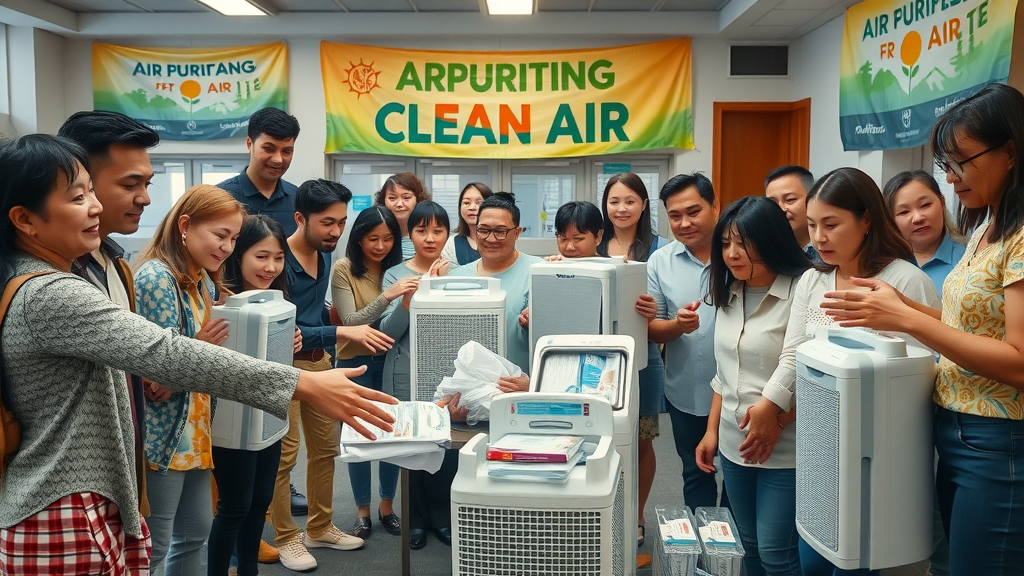
How to Use Air Quality Resources to Protect Yourself from Wildfire Smoke
- Utilizing real-time interactive AQI maps
- Setting up air quality alerts
Your local and national air quality resources are your window to the outside environment. Bookmark real-time AQI maps like AirNow.gov, PurpleAir, and local weather service charts. Subscribe to air quality alerts through mobile apps—these warnings are designed to give you enough lead time to implement indoor air protection and limit exposure to fire smoke .
Educate everyone in your household about these tools and set up multiple reminders (on phones, radios, and alarm systems) so no one misses a sudden alert. With a few clicks or taps, you can make informed decisions that safeguard your health and reduce the risks posed by wildfire smoke in your community.
Best Online Tools and Apps for Air Pollution and Smoke Event Monitoring
AirNow, IQAir, and PurpleAir are among the top tools for tracking air quality around the clock. These platforms not only show current pollution—and smoke—levels, but also provide health advice tailored to your area's risk. Download the related apps, set up location-based notifications, and keep them front and center on your devices during fire season for immediate updates.
Many state and local agencies also provide social media alerts and daily emails, helping you stay one step ahead when wind changes or new fires break out. By integrating these resources into your daily routine, you empower yourself and your loved ones to adapt to evolving smoke conditions with confidence.
Long-Term Strategies to Protect Yourself from the Bad Air Caused by Wildfires
- Home retrofits for clean air
- Establishing clean air companions (supporting neighbors, elderly, children)
- Advocacy for local air quality legislation
Mitigating health impacts from wildfire smoke requires more than temporary fixes. Consider retrofitting your home with tighter seals, upgraded HVAC systems, and built-in air filtrations. Collaborate with neighbors who may not have access to clean air tools, ensuring everyone has a safe place during smoke events. Advocate for stronger local protections—like improved regional air quality monitoring and community shelter funding. Each action taken today strengthens your safety net for the next wildfire season and contributes to broader public health outcomes.
By building these long-term habits and networks, you reduce risk, recovery time, and medical costs for yourself and those around you. Together, we can shape communities that not only survive but thrive amid new air quality challenges—all year round.
Myth Busting: Common Misconceptions about Wildfire Smoke, Air Quality, and Public Health
- Why bandanas and basic masks don’t help
- Myths about indoor air, air filtration, and open windows
"DIY air cleaner projects have been shown to reduce indoor smoke levels by as much as commercial units during a smoke event."
Myth: Any mask helps against wildfire smoke. Fact: Only N95 or similarly rated masks filter the fine particles in smoke. Bandanas and surgical masks are ineffective for particulate matter, offering little real protection.
Myth: Opening a window helps circulate air during a smoke event. Fact: Opening windows brings more smoke inside. Instead, focus on keeping doors and windows sealed and use air filtration devices to maintain a clean air environment.
Myth: Only high-end air purifiers work. Fact: Well-built diy air cleaners with a box fan and a quality filter can match commercial devices for reducing smoke indoors. Always check your filters often and replace as needed for best results.
Signs That You Need Immediate Medical Help After Exposure to the Bad Air Caused by Wildfires
- Severe or worsening respiratory symptoms
- When to consult a physician
If you or anyone in your home experiences severe difficulty breathing, uncontrollable coughing, chest pain, wheezing, confusion, fainting, or blue-tinged lips and fingertips, seek medical help right away. These can be signs of severe exposure to wildfire smoke or an underlying condition getting worse. Do not delay—visit your nearest emergency clinic or call a healthcare provider for advice. Rapid intervention can save lives and prevent long-term health consequences.
When in doubt, get it checked out. If you have existing heart or lung disease, stay alert to any new or worsening symptoms during a smoke event.
Watch this step-by-step video to learn how to build a box fan air cleaner with a furnace filter, giving you a budget-friendly way to improve indoor air quality during wildfire smoke events.
This video demonstrates how to use AirNow.gov, PurpleAir, and mobile apps for real-time air quality and smoke event tracking—helping you protect yourself before wildfire smoke becomes a health hazard.
People Also Ask
How to protect yourself from wildfire smoke inhalation?
- Remain indoors with air filtration
- Use N95 masks outdoors
- Avoid high physical activity and monitor symptoms
Staying indoors with well-maintained air filtration and sealing doors/windows is the best immediate way to protect yourself. If you have to go outdoors, wear a fitted N95 mask and limit exposure time. Monitor your health—if you notice symptoms like coughing or breathing difficulties, take further action and seek care if necessary.
How do I protect myself from bad air quality?
- Monitor AQI every day
- Limit outdoor exposure
- Use air cleaners and keep indoor air clean
Regularly check local air quality online or through apps, especially during wildfire season. Limit outdoor time on high-pollution days, and use air cleaners, portable air purifiers, or DIY air cleaners to ensure safe indoor air. Seal up your living space and be alert to alerts and symptoms of exposure.
Do N95 masks protect against wildfire smoke?
- N95 masks filter out most harmful particulate matter
- Ensure a snug fit for best protection
Yes, N95 masks are effective at filtering out at least 95% of the smallest hazardous particles found in wildfire smoke. For optimal protection, ensure the mask forms a tight seal against your face. Note that standard cloth masks or loosely fitted covers are not effective for wildfire smoke.
How to clear lungs from wildfire smoke?
- Remove yourself from exposure
- Drink plenty of water
- Seek medical evaluation for persistent symptoms
After exposure, get to a clean air environment as quickly as possible. Hydrate well to help your body clear irritants, and rest your lungs. If you notice ongoing symptoms—trouble breathing, chest pain, or a persistent cough—contact a healthcare provider for evaluation and treatment.
Frequently Asked Questions
- Can air purifiers remove all wildfire smoke particles? Most HEPA-rated air purifiers can remove over 99% of wildfire smoke particles, but may not capture all gases. Use alongside other protective measures for best results.
- Is it safe to use the air conditioner during a smoke event? Yes—if set to recirculate indoor air and used with a clean, high-efficiency filter. Avoid using systems that draw in outside air.
- What symptoms of exposure warrant doctor visits? Seek medical attention if you experience trouble breathing, chest pain, confusion, fainting, blue-colored lips/fingertips, or worsening symptoms despite protective measures.
Key Reminders to Protect Yourself from the Bad Air Caused by Wildfires
- Stay vigilant with air quality updates
- Keep filters and purifiers maintained
- Prepare your home before wildfire season
Stay Informed and Take Action to Protect Yourself from the Bad Air Caused by Wildfires
- Regularly check governmental air quality and public health advisories
- Encourage your community to prepare
- Share reliable information with those at risk
"Every step you take to keep air clean during wildfires enhances your health, your loved ones', and your entire community's resilience."
Take action now : fortify your home, equip yourself with air cleaning tools, and share these strategies so everyone can breathe a little easier—even when the smoke rolls in.
To further enhance your understanding of protecting yourself from the harmful effects of wildfire smoke, consider exploring the following resources:
-
The Centers for Disease Control and Prevention (CDC) offers comprehensive Safety Guidelines: Wildfires and Wildfire Smoke , detailing steps to reduce exposure and safeguard health during smoke events. ( cdc.gov )
-
The Environmental Protection Agency (EPA) provides real-time air quality information through its AirNow website, helping you monitor local conditions and make informed decisions about outdoor activities.
These resources offer valuable insights and practical advice to help you effectively manage and mitigate the risks associated with wildfire smoke exposure.
 Add Row
Add Row  Add
Add 

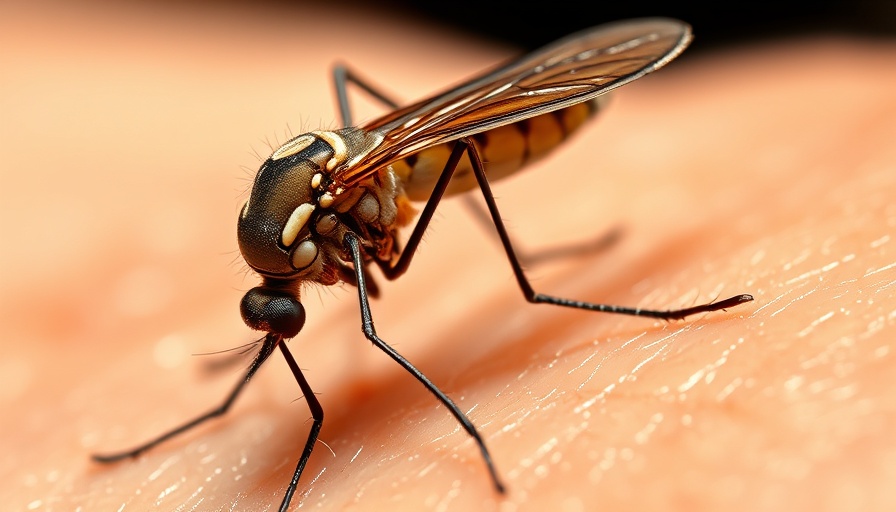


Write A Comment